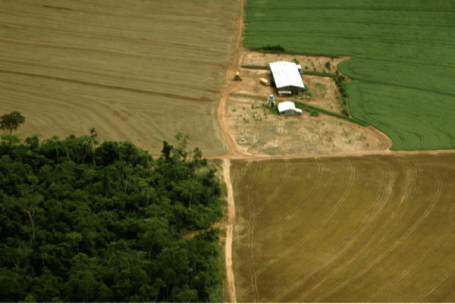Having Your Food and Forests, Too

Expanding agriculture onto already degraded lands could relieve pressure on the world’s remaining forests.
Enabling tropical countries to boost their economies and feed global populations while conserving forests and combating climate change is a developmental and environmental nut that has yet to be cracked. On Thursday, The Prince of Wales will gather international leaders from governments, environmental and social NGOs, agribusiness and finance sectors to highlight ways in which agricultural production can expand without causing further deforestation. One of them is revolutionary in its practicality - restoring degraded lands to absorb agricultural expansion.
This novel approach has enormous potential.
The world is awash with degraded land, which doesn't necessarily mean land with poor soil quality. Rather, it is land where natural vegetation—often forests—was cleared years ago and where the forests did not recover. These areas often have low levels of biodiversity and low stocks of carbon.
[img_assist|nid=11423|title=The World from a Forest Landscape Restoration Perspective|desc=(Click to enlarge)|link=node|align=center|width=480|height=240]
Download High Resolution Bitmap
A recent analysis by the World Resources Institute (WRI) and partners suggests that there are more than one billion degraded hectares globally—an area larger than Brazil. Some of these lands can and should be restored to their native forest state, creating habitat for wildlife, reducing erosion, ensuring clean water supplies, and combating climate change by absorbing carbon dioxide. But others could be utilized for agriculture and thus relieve pressure on the world’s remaining virgin forests while creating local livelihoods.
Imagine a future where increased demand for beef, soya, and palm oil is met not by converting tropical forests and carbon-rich peatlands but by utilizing just a portion of these degraded areas.
The Prince of Wales has. Indonesian President Susilo Bambang Yudhoyono has, too, when he announced a policy to develop Indonesia’s palm oil industry on degraded lands instead of in forests. This is visionary leadership.
The Norwegian government sees this future, as well. In May of this year, Norway committed $1 billion to Indonesia if the country can demonstrate reduced tropical deforestation and greenhouse gas emissions. Utilizing degraded lands is a pillar of this commitment.
WRI has been lending this vision practical support in Indonesia, working to divert planned oil palm plantations away from natural forests and on to degraded land. We have been popularizing this strategy by constructively engaging palm oil companies, NGOs and government agencies. Using satellites and field surveys, we have mapped the province of West Kalimantan to identify tracts of degraded land that are candidates for sustainable oil palm. In addition, we have initiated a pilot “land swap” that will steer a planned plantation away from natural forests on to a tract of degraded land.
Our experience suggests, however, that if degraded lands are to absorb agricultural expansion at sufficient scale, countries need to answer three key questions: “what, where, and how?"
-
First, “what is degraded land?” Governments, companies, and NGOs who may have different perspectives must agree on a definition. And if sustainable agricultural expansion is to be achieved, the definition will need to include some threshold for carbon and biodiversity content below which the area can be considered “degraded.”
-
Second, “where is the degraded land?" To put degraded land into productive agricultural use, governments, companies, and farmers need to know exactly where these areas are located. And these lands need to be physically suitable, economically viable, legally available, and socially acceptable to nearby communities. Working with other NGOs and the Prince’s Rainforests Project, WRI has developed a methodology for identifying degraded lands that meet these criteria for oil palm development in Indonesia.
If we are to feed nine billion people by 2050, successfully tackle climate change, and conserve the world’s biodiversity, we need to break the link between food security and deforestation.
- Third, “how can degraded land be transformed into productive use?” Analyses have shown that converting degraded areas to agricultural production can be financially attractive. However, local communities need to have given their free, prior, and informed consent before tracts of land are restored into farms, plantations, or ranches. At the same time, the “cost” of expansion into virgin forests needs to increase—through policies and enforcement—since degraded land is often a symptom of a cheap frontier.
Agricultural development has traditionally pushed forward into forests. But the time has come to look back to the areas cleared years ago. If we are to feed nine billion people by 2050, successfully tackle climate change, and conserve the world’s biodiversity, we need to break the link between food security and deforestation. As Thursday’s meeting convened by The Prince of Wales will highlight, using degraded lands is an important part of severing that link.
We just might be able to have our food and forests, too.